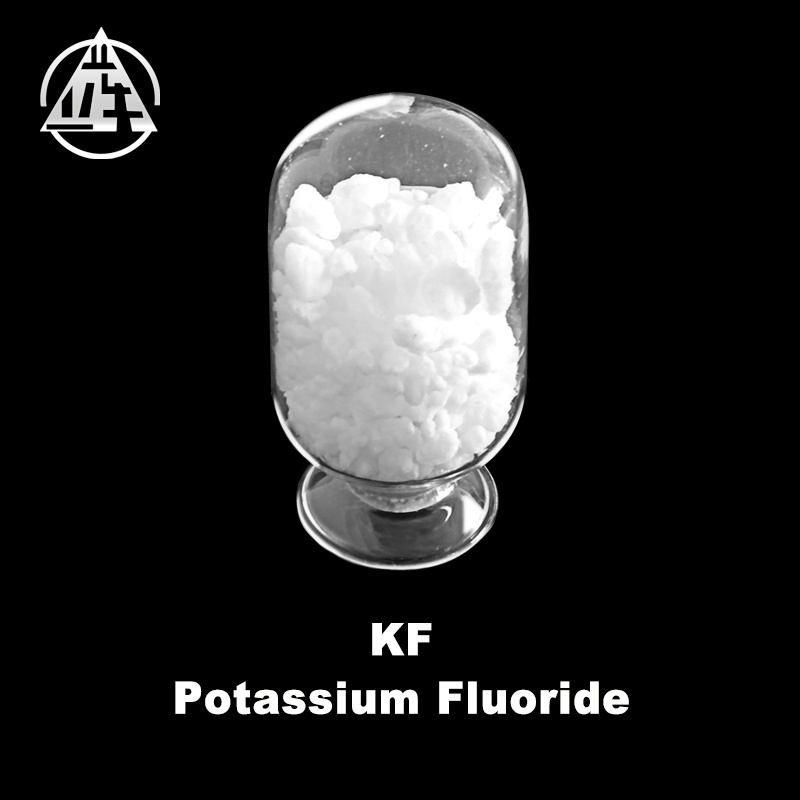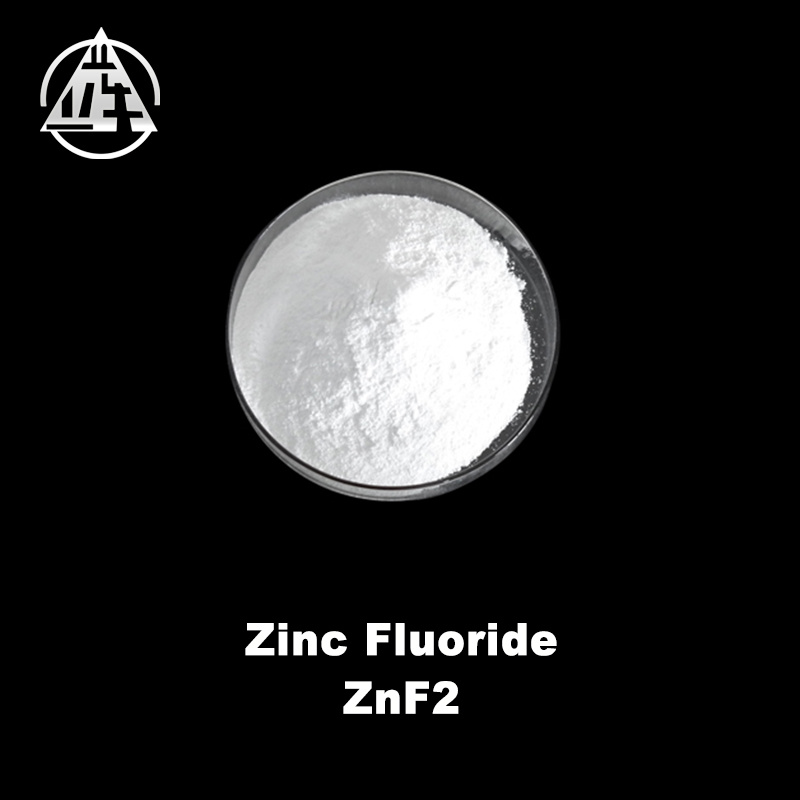Indium Fluoride: Paving the Way for High-Efficiency Sensors
Release Time:
2023-11-17
Table of Contents: 1. Introduction 2. What is Indium Fluoride? 3. Properties of Indium Fluoride 4. Applications of Indium Fluoride 5. Advancements in Sensor Technology 6. Indium Fluoride in High-Efficiency Sensors 7. Benefits of Using Indium Fluoride in Sensors 8. Indium Fluoride in Other Industries 9. Frequently Asked Questions (FAQs) 10. Conclusion ## 1. Introduction In today's fast-paced techno
Table of Contents:
1. Introduction
2. What is Indium Fluoride?
3. Properties of Indium Fluoride
4. Applications of Indium Fluoride
5. Advancements in Sensor Technology
6. Indium Fluoride in High-Efficiency Sensors
7. Benefits of Using Indium Fluoride in Sensors
8. Indium Fluoride in Other Industries
9. Frequently Asked Questions (FAQs)
10. Conclusion
## 1. Introduction
In today's fast-paced technological era, sensors play a crucial role in various industries, enabling advancements and innovations. One such remarkable compound shaping the sensor landscape is Indium Fluoride. This article delves into the properties, applications, and significance of Indium Fluoride in the realm of high-efficiency sensors.
## 2. What is Indium Fluoride?
Indium Fluoride, with the chemical formula InF3, is an inorganic compound that belongs to the family of metal halides. It is primarily composed of indium cations (In^3+) and fluoride anions (F^-). Indium Fluoride is known for its high melting point and exceptional stability, making it an ideal candidate for various applications.
## 3. Properties of Indium Fluoride
Indium Fluoride boasts several notable properties that contribute to its efficacy in high-efficiency sensors. Its crystal structure exhibits a rhombohedral form, allowing for efficient charge transport and electron mobility. Additionally, it possesses a wide bandgap, low refractive index, and exceptional optical transparency in the infrared spectrum, making it suitable for sensor applications.
## 4. Applications of Indium Fluoride
4.1 Optoelectronics: Indium Fluoride finds extensive use in the optoelectronics industry. Its exceptional optical properties enable the development of advanced optical fibers, lenses, and photonic devices. It plays a vital role in infrared imaging, high-performance lasers, and fiber optic communications systems.
4.2 Energy Storage: The unique properties of Indium Fluoride make it an excellent candidate for energy storage applications. It is utilized in advanced rechargeable batteries, such as lithium-ion batteries, as a component of the electrolyte system. Its stability and high ionic conductivity contribute to enhanced battery performance and longer lifespan.
4.3 Catalysts: Indium Fluoride is also utilized as a catalyst in various chemical reactions. Its presence enhances the efficiency and selectivity of these reactions, making it a crucial component in industries such as pharmaceuticals and petrochemicals.
## 5. Advancements in Sensor Technology
Sensor technology has witnessed remarkable advancements in recent years, revolutionizing industries such as healthcare, automotive, and aerospace. The demand for high-efficiency sensors with improved accuracy, sensitivity, and reliability has led to the exploration of novel materials like Indium Fluoride.
## 6. Indium Fluoride in High-Efficiency Sensors
The unique properties of Indium Fluoride make it an ideal choice for high-efficiency sensors. Its wide bandgap allows for efficient detection of various wavelengths, enabling precise measurements in diverse sensing applications. Indium Fluoride-based sensors exhibit high sensitivity, low noise levels, and excellent stability, making them indispensable in fields such as environmental monitoring, medical diagnostics, and industrial automation.
## 7. Benefits of Using Indium Fluoride in Sensors
7.1 Enhanced Sensitivity: Indium Fluoride-based sensors offer enhanced sensitivity, enabling the detection of even minute changes or variations in the environment being monitored. This is crucial in applications where precision and accuracy are paramount.
7.2 Low Noise Levels: The exceptional stability and low refractive index of Indium Fluoride contribute to reduced noise levels in sensors. This ensures reliable and accurate data collection, especially in demanding environments.
7.3 Temperature Stability: Indium Fluoride exhibits excellent stability across a wide temperature range, making it suitable for sensors that operate in extreme conditions. This property enables the measurement of critical parameters without compromising accuracy or reliability.
## 8. Indium Fluoride in Other Industries
Apart from its significance in high-efficiency sensors, Indium Fluoride finds applications in various other industries. Its properties make it a valuable component in the production of glass, ceramics, and phosphors used in lighting technologies. Additionally, it serves as a catalyst in chemical reactions, contributing to advancements in pharmaceuticals, petrochemicals, and other sectors.
## 9. Frequently Asked Questions (FAQs)
Q1. What are the safety considerations associated with Indium Fluoride?
Q2. How does Indium Fluoride compare to other sensor materials?
Q3. Can Indium Fluoride be used in extreme temperature environments?
Q4. What are the future prospects of Indium Fluoride in sensor technology?
Q5. Is Indium Fluoride a sustainable and eco-friendly material?
## 10. Conclusion
Indium Fluoride has emerged as a game-changer in the realm of high-efficiency sensors. Its exceptional properties, wide-ranging applications, and significant contributions to various industries make it an invaluable material. As technology advances, Indium Fluoride continues to pave the way for innovation, enabling the development of highly accurate, sensitive, and reliable sensors that drive progress in numerous sectors.
1. Introduction
2. What is Indium Fluoride?
3. Properties of Indium Fluoride
4. Applications of Indium Fluoride
5. Advancements in Sensor Technology
6. Indium Fluoride in High-Efficiency Sensors
7. Benefits of Using Indium Fluoride in Sensors
8. Indium Fluoride in Other Industries
9. Frequently Asked Questions (FAQs)
10. Conclusion
## 1. Introduction
In today's fast-paced technological era, sensors play a crucial role in various industries, enabling advancements and innovations. One such remarkable compound shaping the sensor landscape is Indium Fluoride. This article delves into the properties, applications, and significance of Indium Fluoride in the realm of high-efficiency sensors.
## 2. What is Indium Fluoride?
Indium Fluoride, with the chemical formula InF3, is an inorganic compound that belongs to the family of metal halides. It is primarily composed of indium cations (In^3+) and fluoride anions (F^-). Indium Fluoride is known for its high melting point and exceptional stability, making it an ideal candidate for various applications.
## 3. Properties of Indium Fluoride
Indium Fluoride boasts several notable properties that contribute to its efficacy in high-efficiency sensors. Its crystal structure exhibits a rhombohedral form, allowing for efficient charge transport and electron mobility. Additionally, it possesses a wide bandgap, low refractive index, and exceptional optical transparency in the infrared spectrum, making it suitable for sensor applications.
## 4. Applications of Indium Fluoride
4.1 Optoelectronics: Indium Fluoride finds extensive use in the optoelectronics industry. Its exceptional optical properties enable the development of advanced optical fibers, lenses, and photonic devices. It plays a vital role in infrared imaging, high-performance lasers, and fiber optic communications systems.
4.2 Energy Storage: The unique properties of Indium Fluoride make it an excellent candidate for energy storage applications. It is utilized in advanced rechargeable batteries, such as lithium-ion batteries, as a component of the electrolyte system. Its stability and high ionic conductivity contribute to enhanced battery performance and longer lifespan.
4.3 Catalysts: Indium Fluoride is also utilized as a catalyst in various chemical reactions. Its presence enhances the efficiency and selectivity of these reactions, making it a crucial component in industries such as pharmaceuticals and petrochemicals.
## 5. Advancements in Sensor Technology
Sensor technology has witnessed remarkable advancements in recent years, revolutionizing industries such as healthcare, automotive, and aerospace. The demand for high-efficiency sensors with improved accuracy, sensitivity, and reliability has led to the exploration of novel materials like Indium Fluoride.
## 6. Indium Fluoride in High-Efficiency Sensors
The unique properties of Indium Fluoride make it an ideal choice for high-efficiency sensors. Its wide bandgap allows for efficient detection of various wavelengths, enabling precise measurements in diverse sensing applications. Indium Fluoride-based sensors exhibit high sensitivity, low noise levels, and excellent stability, making them indispensable in fields such as environmental monitoring, medical diagnostics, and industrial automation.
## 7. Benefits of Using Indium Fluoride in Sensors
7.1 Enhanced Sensitivity: Indium Fluoride-based sensors offer enhanced sensitivity, enabling the detection of even minute changes or variations in the environment being monitored. This is crucial in applications where precision and accuracy are paramount.
7.2 Low Noise Levels: The exceptional stability and low refractive index of Indium Fluoride contribute to reduced noise levels in sensors. This ensures reliable and accurate data collection, especially in demanding environments.
7.3 Temperature Stability: Indium Fluoride exhibits excellent stability across a wide temperature range, making it suitable for sensors that operate in extreme conditions. This property enables the measurement of critical parameters without compromising accuracy or reliability.
## 8. Indium Fluoride in Other Industries
Apart from its significance in high-efficiency sensors, Indium Fluoride finds applications in various other industries. Its properties make it a valuable component in the production of glass, ceramics, and phosphors used in lighting technologies. Additionally, it serves as a catalyst in chemical reactions, contributing to advancements in pharmaceuticals, petrochemicals, and other sectors.
## 9. Frequently Asked Questions (FAQs)
Q1. What are the safety considerations associated with Indium Fluoride?
Q2. How does Indium Fluoride compare to other sensor materials?
Q3. Can Indium Fluoride be used in extreme temperature environments?
Q4. What are the future prospects of Indium Fluoride in sensor technology?
Q5. Is Indium Fluoride a sustainable and eco-friendly material?
## 10. Conclusion
Indium Fluoride has emerged as a game-changer in the realm of high-efficiency sensors. Its exceptional properties, wide-ranging applications, and significant contributions to various industries make it an invaluable material. As technology advances, Indium Fluoride continues to pave the way for innovation, enabling the development of highly accurate, sensitive, and reliable sensors that drive progress in numerous sectors.



